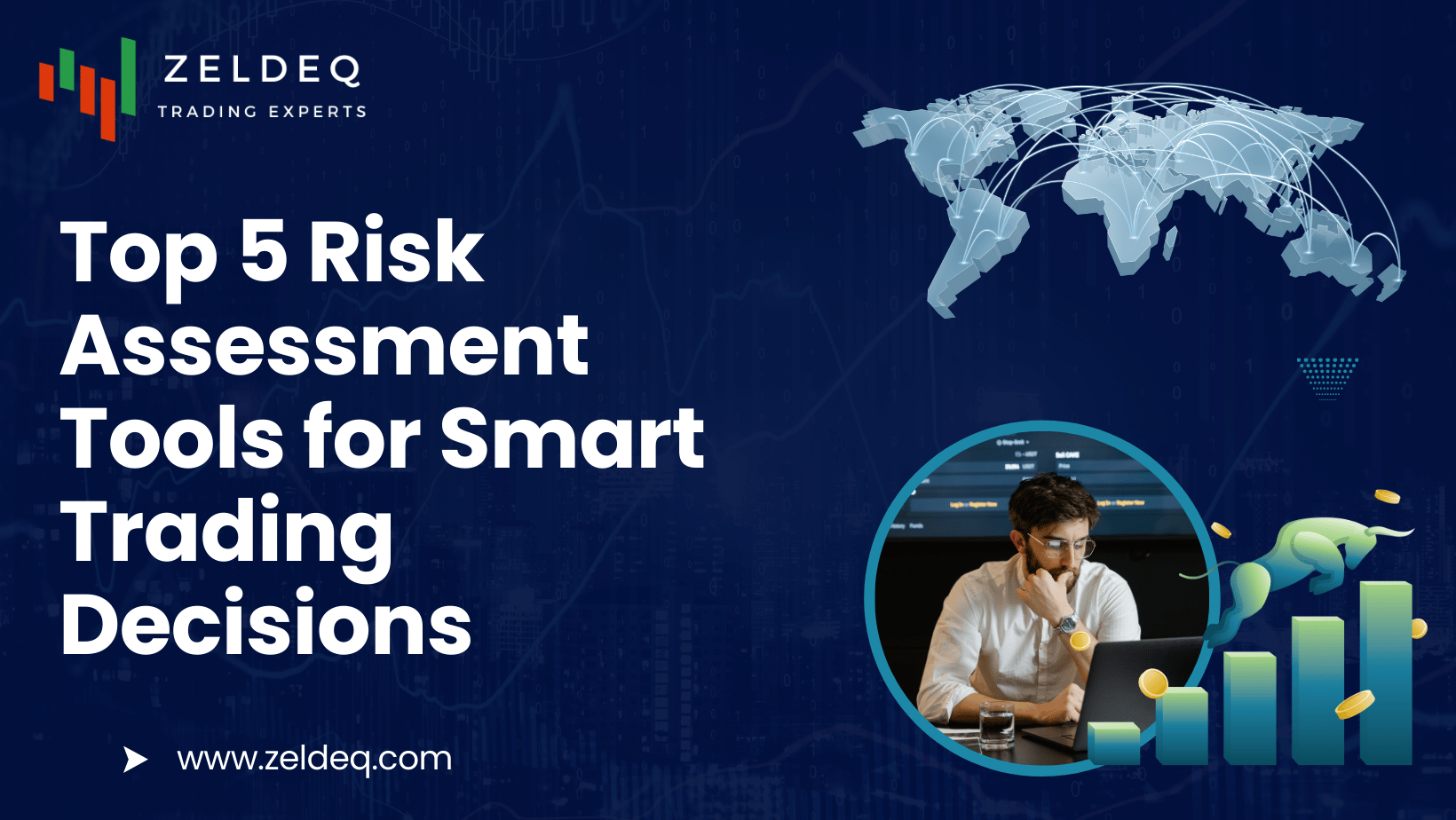Table of Contents
Introduction
In the world of trading, understanding and managing risk is essential for success. Whether you’re a seasoned trader or just starting, having the right tools at your disposal can help you make informed decisions and potentially maximize your returns. In this blog post, we’ll explore the top five risk assessment tools that can enhance your trading strategy and lead to smarter decision-making.
Why Risk Assessment is Crucial in Trading
Risk assessment allows traders to evaluate the potential negative outcomes of their investment decisions. By identifying the risks involved, traders can develop strategies to mitigate these risks and protect their capital. In volatile markets, where prices can fluctuate dramatically, having a robust risk assessment framework can mean the difference between profit and loss.
Understanding risk not only protects your capital but also empowers you to make confident trading decisions.
Key Benefits of Risk Assessment
- Minimized Losses: By identifying risks early, traders can set stop-loss orders or hedge their positions. For more on stop-loss strategies, refer to our guide on essential trading costs and fees beginners should know.
- Informed Decision Making: Well-informed traders can make strategic decisions based on data rather than emotions.
- Enhanced Portfolio Management: Regular risk evaluations help in reallocating assets for optimal performance. To learn more about portfolio strategies, check out 10 essential steps to build your winning stock portfolio.
Top 5 Risk Assessment Tools
1. Value at Risk (VaR)
Value at Risk (VaR) is a statistical measure that estimates the potential loss in value of a portfolio over a defined period for a given confidence interval. It answers the question: “What is the worst-case scenario for my investments?”
How It Works
- Example: If a portfolio has a 1-day VaR of $1,000 at a 95% confidence level, there is a 5% chance that the portfolio could lose more than $1,000 in a day.
- Visualization: A simple table can help illustrate potential losses based on different confidence levels.
| Confidence Level | Potential Loss |
|---|---|
| 90% | $800 |
| 95% | $1,000 |
| 99% | $1,200 |
VaR provides a clear snapshot of potential downside risk, making it a favorite among risk managers.
2. Stress Testing Tools
Stress testing tools simulate extreme market conditions to evaluate how a portfolio would perform under adverse scenarios. These tests can help traders understand vulnerabilities in their investment strategies.
Key Features
- Scenario Analysis: Traders can model various market conditions, such as economic downturns or geopolitical events. For insights on market influences, see our article on top 5 stock market trends to watch in 2024.
- Impact Assessment: These tools help identify which assets are most susceptible to market shocks. Platforms like Bloomberg Terminal and RiskMetrics are popular for stress testing.
Stress testing is like preparing for a rainy day; you want to know how your portfolio will weather the storm.
3. Monte Carlo Simulation
Monte Carlo simulation is a mathematical technique that allows traders to account for uncertainty in their risk assessments by running thousands of simulations to predict potential outcomes.
Benefits
- Comprehensive Analysis: It provides a range of possible outcomes and their probabilities, rather than a single forecast.
- Tail Risk Measurement: This tool helps in understanding extreme risks that may not be captured by traditional models.
Traders can use tools like @RISK or Crystal Ball for Monte Carlo simulations. For a broader understanding of market dynamics, check our resource on trading hours uncovered: maximize market potential.
Monte Carlo simulations offer a powerful way to visualize risk in uncertain environments—essential for strategic planning.
4. Risk/Reward Ratio Calculator
The risk/reward ratio calculator helps traders assess the potential reward for the amount of risk they are willing to take on a trade. A favorable risk/reward ratio contributes to successful trading strategies.
Calculating the Ratio
- Formula:
Risk/Reward Ratio = Potential Loss / Potential Gain - Example: If you risk $100 to potentially gain $300, your risk/reward ratio is 1:3.
| Potential Loss | Potential Gain | Risk/Reward Ratio |
|---|---|---|
| $100 | $300 | 1:3 |
A well-calculated risk/reward ratio is a cornerstone of effective trading strategy—don’t overlook it!
5. Portfolio Risk Analyzer
This tool evaluates the overall risk of a portfolio by measuring the correlation between different assets and their individual risk contributions.
Advantages
- Diversification Assessment: It helps traders understand how different assets interact, aiding in effective diversification. For more on diversification strategies, see our article on top 5 diversification strategies for smarter trading.
- Performance Tracking: Regularly analyzing portfolio risk can help traders adjust their strategies as market conditions change.
Popular portfolio risk analyzers include Morningstar and Portfolio Visualizer.
Understanding portfolio risk is essential; it’s not just about individual asset risk but how they work together.
Conclusion
Risk assessment tools are invaluable for traders aiming to make informed decisions in an unpredictable market. By utilizing tools like VaR, stress testing, Monte Carlo simulations, risk/reward ratio calculators, and portfolio risk analyzers, traders can better understand their risks and enhance their trading strategies. Implementing these tools can lead to more calculated and successful investment decisions.
FAQs
Q1: What is the best risk assessment tool for beginners?
A1: Beginners may find the Risk/Reward Ratio Calculator to be the most straightforward tool, as it simplifies the process of evaluating potential risks and rewards.
Q2: Are there free tools available for risk assessment?
A2: Yes, several online platforms offer free risk assessment tools, such as Portfolio Visualizer and basic calculators available on financial websites.
Q3: How often should I assess my trading risks?
A3: Regular assessments are recommended, especially during times of market volatility. A good practice is to evaluate risks at least monthly or whenever you make significant changes to your portfolio.
Q4: Can these tools guarantee profits?
A4: No tool can guarantee profits, but they can significantly improve your decision-making process and help manage risks effectively.
For more in-depth information on risk assessment tools, consider visiting resources like Investopedia and CFA Institute. Happy trading!


